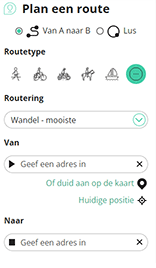

Nakhon Pathom is a city in central Thailand, the former capital of Nakhon Pathom Province. One of the most important landmarks is the large Phra Pathom Chedi, a 127 m stupa, which marks the approximate location of the region's first exposure to Buddhism and Indian civilisations. The city is also home to Thailand's only Bhikkhuni temple Wat Song Thamma Kanlayani, which is also open to women from abroad. Nakhon Pathom houses a campus of Silpakorn University within the former Sanam Chan Palace.
Nakhon Pathom was formerly by the sea but the shifting coastline now places it about 50 km inland. Archaeological findings date back to the 4th century and the first mention of a stupa was in the year 675 CE.
The name derives from the Pali words Nagara Pathama, meaning 'first city', and Nakhon Pathom is often referred to as Thailand's oldest city. Archaeological remains have been linked to the Dvaravati kingdom, dating to the 6th through 11th centuries.
Nakhon Pathom Province centuries ago was a coastal city on the route between China and India; due to sedimentation from the Chao Phraya River, the coastline moved much farther to sea. When the Tha Chin River changed its course, the city lost its main water source and thus was for hundreds of years deserted, the population moving to a city called Nakhon Chai Si
Dvaravati era (6-11th centuries)
According to Charles Higham, "Two silver medallions from beneath a sanctuary at Nakhon Pathom, the largest of the moated sites, proclaim that it was 'the meritorious work of the King of Sri Dvaravati', the Sanskrit term Dvaravati meaning 'that which has gates'. The script is in south Indian characters of the seventh century." Nakhon Pathom was the largest Dvaravati center.
Khmer era (11-13th centuries)
While Nakhon Pathom was a prosperous city during the pre-Angkorian Dvaravati period; it was the Angkorian Empire that left a greater mark in the 11th century. However, the shifting landscape and the altering of the river course caused a drought that led to the abandonment of Nakhon Pathom in favour of the new riverside settlement of Nakhon Chaisi. The ruins of the Angkorian stupa inspired King Rama IV to build the current large stupa, which was completed in 1870 in the reign of King Chulalongkorn. He also commanded that the Chedi Bucha canal be dug to facilitate transport. [Multiple Internet sources]
![]() | | Publiek
| | Publiek

Selecteer hieronder één van de populairste activiteiten of verfijn je zoekopdracht.
Ontdek de mooiste en meest populaire routes in de buurt, zorgvuldig gebundeld in passende selecties.
Selecteer hieronder één van de populairste categorieën of laat je inspireren door onze selecties.
Ontdek de mooiste en meest populaire bezienswaardigheden in de buurt, zorgvuldig gebundeld in passende selecties.
Met RouteYou kan je eenvoudig zelf aangepaste kaarten maken. Stippel je route uit, voeg waypoints of knooppunten toe, plan bezienswaardigheden en eet- en drinkgelegenheden in en deel alles met je familie en vrienden.
Routeplanner

<iframe src="https://plugin.routeyou.com/poiviewer/free/?language=nl&params.poi.id=7498707&params.language=en" width="100%" height="600" frameborder="0" allowfullscreen></iframe>
© 2006-2025 RouteYou - www.routeyou.com